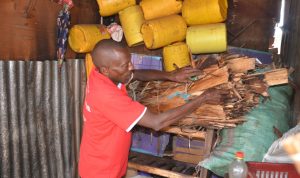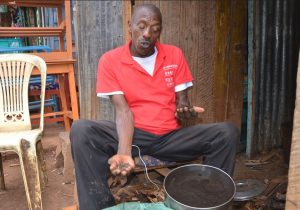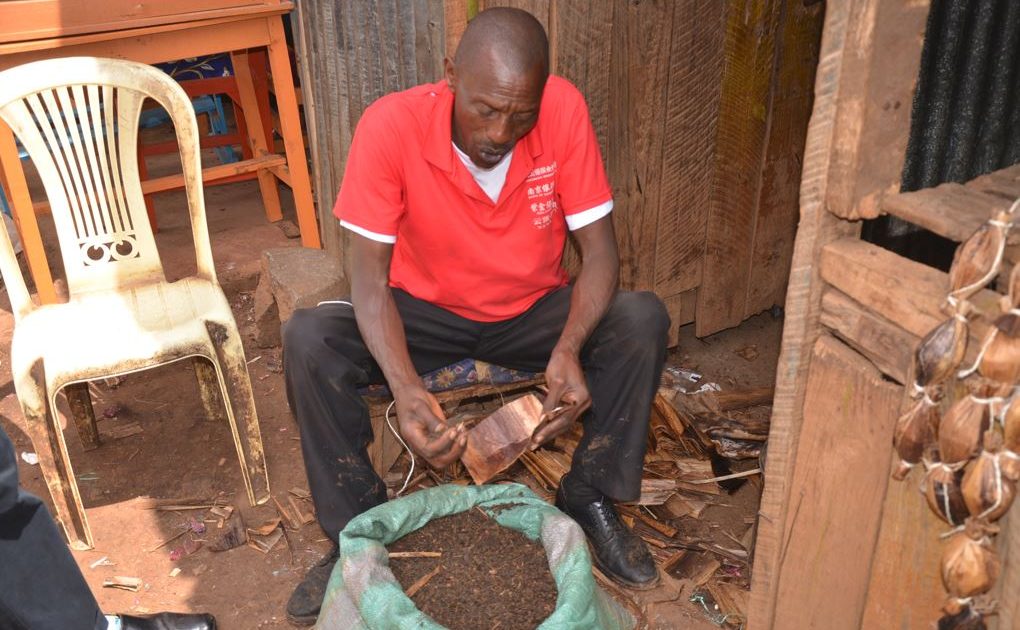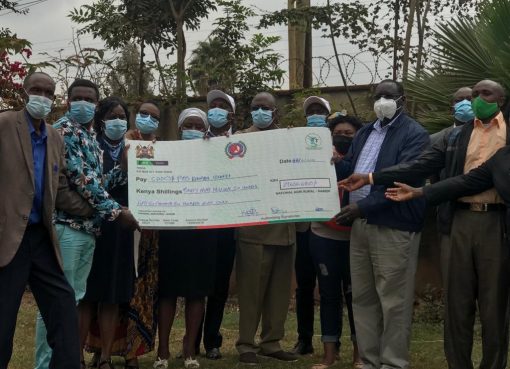For John Mwangi Gathii, 53, safeguarding his family’s nostalgic legacy is more precious than precious pearls.
In fact, when asked, his greatest worry is whether any of his four sons will be willing enough to take over the mantle of managing the family business once he exits the scene. And his worries are understandable.

For now, none of his children (who are still pursuing their education) appear interested in engaging in the sale of tobacco, an enterprise few would associate with in this time and age.
Yet for Gathii, who has been managing the business since he lost his father in 1986, seasoning and selling snuff is a hallowed calling that can only be bequeathed to someone from one’s own lineage.
For him, to think any other Tom, Dick, or Henry can venture into such solemn work is stretching one’s imagination too far and putting oneself in direct conflict with long-held traditions.
“Trading in tobacco is not something you wake up one day and decide to start just because you want to make money. It is a sacred ritual that must be handed down to individuals from selected families with solemn precision.
I personally inherited this business from my father in 1986 and hopefully believe someone from my family will carry the torch forward once I am gone,” he told KNA during an interview at his stall in Nyeri town.
The business has been in operation since the outbreak of the Second World War and has been passed down through the family to the present.
Gathii’s father took over its management in 1965 and eventually transformed it into a household name in the sale of both nasal snuff and rolled cigars, popularly known as kiraiko, within Nyeri County and even beyond.
Interestingly, the family has managed to preserve the premise’s novelty over several decades with little touches of refurbishment not worth writing home about.
There is nothing inside the one-room stall that can appeal to the eyes, save for rows of tobacco wrappings hanging on strings like ritual paraphernalia.
And contrary to the changing times, Gathii still believes the use of tobacco in its traditional forms will outlive time itself.
He is also unperturbed by those who link the sniffing of tobacco with proscribed groups such as the Mungiki, dismissing such sentiments as unfounded and misplaced.
“Selling snuff is not illegal; otherwise, this business would not have survived this long. In fact, tobacco is sometimes a mandatory requirement during important social events like dowry negotiations. When the elders ask a prospective groom to include a can of tobacco snuff before negotiations can proceed, he can only ignore such a request at the risk of losing the bride,’’ he went on.
When we probed to know his take on why the trade is fast dying out among Kenyans, Gathii blamed the shift on generational change and the influx of modern forms of popular amusements such as shisha and cheap liquor synonymous with young people.
He also notes that the exit of the elderly generation from the stage, which comprises a big chunk of his clients, is threatening the future of the once flourishing trade.
“While it is public knowledge that our trade is slowly dying due to generational changes, tobacco still retains its place as a useful remedy for a number of health conditions, such as relief for headaches and nose bleeding, and also as a cure for hypertension. These, among many other uses, are proof that tobacco is still an important product among our people even today,” he added.
Nevertheless, sales have plummeted to their lowest compared to the 1980s, when snuff trade was big business.

By then, people used to enjoy a snuff or a puff of kiraiko anywhere and anytime without fear of being labelled adherents to clandestine criminal gangs.
Yet, a majority of those who still get the stuff from Gathii are elderly people, ranging in age from 40 to 100.
The trader also argues that those who take tobacco enjoy longer and more productive lives compared with those who view it as a narcotic.
“Anyone who sniffs or smokes tobacco has a higher probability of living up to 100 years or more since the plant itself has medicinal value. Only Christianity and Western education still view our business as illegal and outdated. But I can assure you that those who know otherwise are still taking their favourite snuff, including youths who come here to pick them up,” he says.
A single wrapping of snuff and kiraiko costs Sh5, meaning it is quite affordable even among low-income earners.
But to prepare quality snuff requires ingenuity and patience.
First, dried tobacco leaves are pounded in a mortar and thereafter mixed with olive oil, sodium bicarbonate, and a little water to give it an aromatic finesse.
The snuff is then packed in dry banana fibre wrappings to help retain the all-familiar aromatic flavour.
Surprisingly, even the African Independent Pentecostal Church of Africa church where Gathii worships is apologetic with his business and even allows members to present tobacco during social functions like dowry negotiations.
“My church, where I worship, knows what I do and has never criticised me in any way. They are well aware that what I do is quite beneficial in a number of our cultural practices, such as dowry negotiation and even when treating some health complications. In fact, some of the members buy my products to present at social functions, which to me is a direct sanction of what I do here,” he states.
Tobacco is derived from the leaves of the genus Nicotiana, a plant from the nightshade family prevalent in North and Latin America.
Archaeological studies trace the use of tobacco to around the first century BC, when the Maya people from Central America used its leaves for smoking and during religious ceremonies.
It then spread to the Mississippi Valley between AD 470 and AD 630. Native American Shamans developed tobacco use for religious rites.
Over time, people practicing medicine also started using tobacco in different forms to cure certain illnesses such as asthma, earaches, bowel problems, fever, sore eyes, depression, insect bites, and burns, among others.
By the time Columbus and his successors documented tobacco in other countries, the natives had started using tobacco in pipes, cigars, and snuff.
Subsequently, Portuguese and Spanish sailors helped spread different forms of tobacco around the world.
The major tobacco-growing and consuming countries are China, the USA, the Former Soviet States, India, and Brazil.
A report released by the World Health Organisation (WHO) in July this year shows that tobacco use contributes to over 8 million deaths a year, with the number projected to exceed 10 million deaths annually by 2030.
Sadly, about 70 per cent of these deaths will be registered in developing countries.
In Kenya, an estimated 8,100 Kenyans die of tobacco-related diseases every year.
While consumption of tobacco has been declining globally, WHO data shows that 13 per cent of Kenyan adults still use it.
Out of this number, 9.4 per cent ingest tobacco by smoking, while the rest opt for varying types of smokeless tobacco products, including sniffing.
Another report by the National Authority for the Campaign Against Drug Abuse reported that snuff, tamboo, ndovu, nicotine pouches, and kamath spit tobacco were the most prevalent forms of smokeless tobacco products being used in Kenya.
By Samuel Maina and Wangari Mwangi





